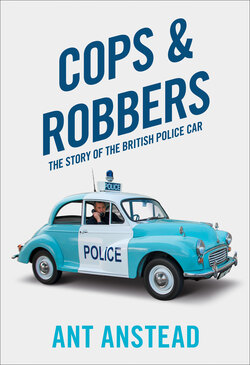Читать книгу Cops and Robbers - Ant Anstead - Страница 20
CHAPTER FOUR POST-WAR PEACE; LONDON SETS THE WAY
ОглавлениеThe Met police reorganised their management of traffic just after World War I started and placed it under one commissioner’s auspices, which, in hindsight, can be seen as the beginnings of the first traffic department. At this time congestion from the mixture of horse-drawn and motor traffic was far worse in London than anywhere else in the UK, even during the war: a conflict which was initially seen as a short-term inconvenience likely to end by Christmas.
However, this scenario lasted five years and the practical experience gained by policing the city’s traffic during the war years had shown the value of having a separate department to deal with these matters in London. The Commissioner, too, saw the wisdom of this and, in writing to the Home Secretary at the end of the war, stated that he proposed to make the temporary wartime arrangement a permanent one. He went on to state that, ‘with the object of securing still further continuity and uniformity, it was desirable that a department should be formed to deal with traffic and to devote its resources to the study of the various and intricate problems that were constantly arising. This would act as an intelligence department by noting all points arising in other Public Departments, or in the press, and also the effect of the statistics prepared by the Executive Department and the Public Carriage Office.’ The Commissioner also said that he ‘envisaged that the new department would also provide a member for the Committee for the examination of Parliamentary Bills and, when required, for the Cab Drivers and the (splendidly named!) Noise Committee (no, this is not a Monty Python sketch). It would also deal with all correspondence on the subject of traffic, including by-laws and licensing. In addition, it would also generally collect and collate all matters appertaining to every phase of the traffic question.’
The Commissioner’s ideas on the need for a new department were accepted by the Home Secretary, and on 24 May 1919 the department officially came into being, having responsibility for all traffic matters, whether vehicular, aerial or pedestrian. The Commissioner, Sir Nevil Macready, in his annual report for the year, said of its formation that:
‘Owing to the increasing complexity of matters concerning traffic, it has been necessary to form a separate department to deal with this matter. The traffic advisers are in close touch with the Ministry of Transport and are thereby enabled to issue and co-ordinate suggestions. There is no doubt that the congestion of the traffic in the Metropolis is, to a great extent, due to existing thoroughfares being out of date and unadapted, either to the volume or the nature of the present traffic conditions. Another factor is the length of time taken to repair streets and roads, no attempt being made to work at night, with the result that traffic becomes hopelessly congested in main thoroughfares for a period which could probably be very considerably curtailed if more up to date ideas prevailed.’
And it appears that almost a century later nothing much has changed!
Traffic policing was born and the new department was to be responsible to the Assistant Commissioner ‘B’, Mr Frank Elliott, and came under the immediate control of Mr Suffield Mylius, a civil staff member, and Superintendent Arthur Bassom, who was in charge of the Public Carriage Office, both men carrying the new title of ‘Traffic Advisor’.
